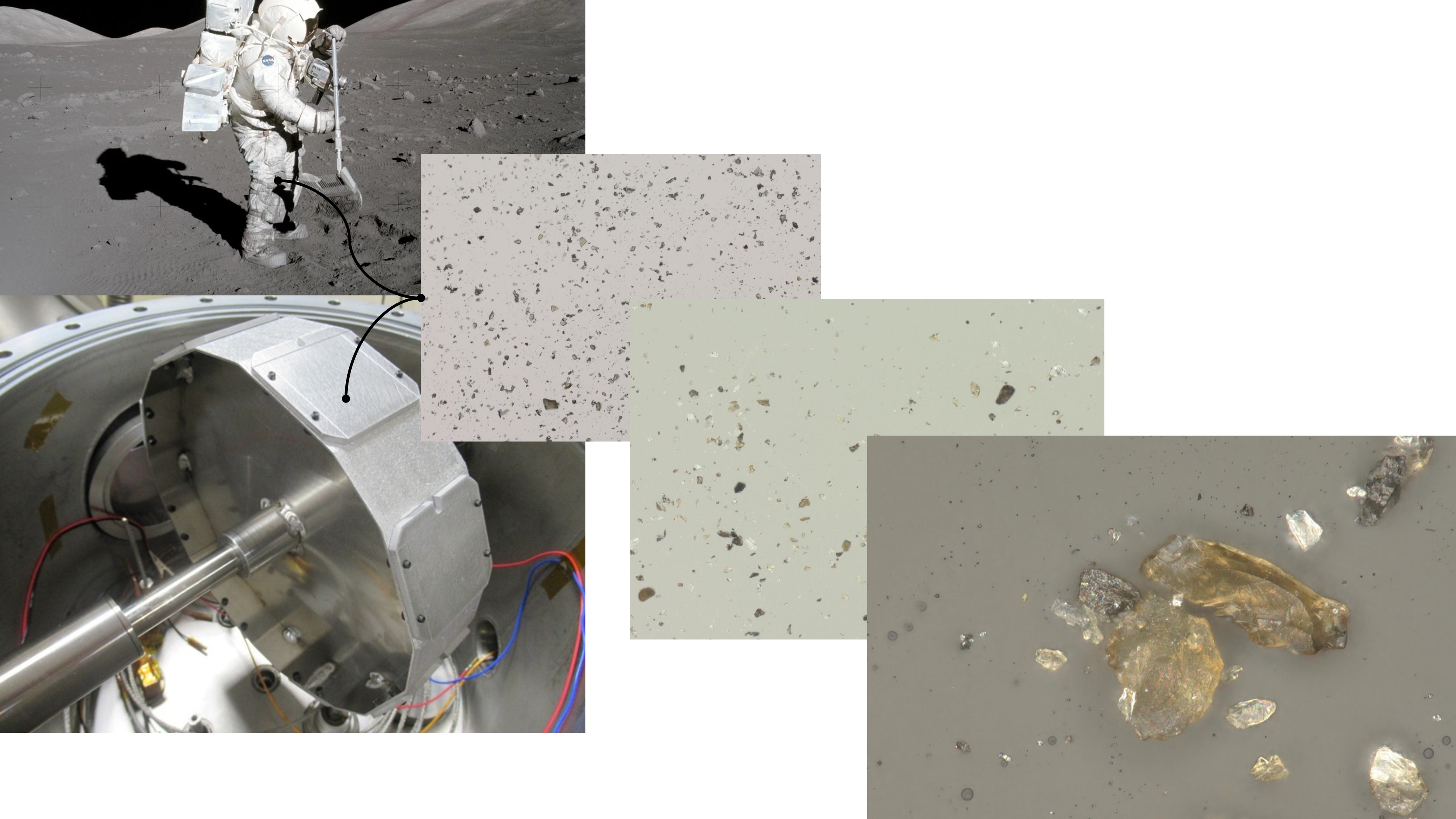Previous missions dealing with dusty environments (Apollo, Mars rover) demonstrated that dust tends to stick on surfaces and it is problematic. This deteriorates materials performances, shortens payloads and rovers lifetime and creates health issues on crews. In order to improve reliability and performance of future similar missions (especially Artemis with its future ascent/descent vehicles, lunar gateway, human and robotics surface exploration units,...), it is important to understand the related adhesion mechanisms. This would also bring knowledge on the dust transport mechanisms. It would give the possibility to improve material selection for such environments and to assess mitigation techniques. Predictions and models would also help to interpret missions data.
The root cause of differences between lunar and terrestrial environments is the lower surface gravity of the Moon, that allows only a very thin atmosphere to sustain. Micrometeoroid bombardments continuously crush the lunar rocks and generate a thick layer of very thin dust. The regolith formation involves complex mechanisms including fragmentation, melting and chemical reactions. Unlike on Earth, the chemically reactive surfaces are quenched only very slowly.
Dust adhesion science is at the frontier between mineralogy, material surface science, plasma matter interaction and chemistry. It is dominated by three forces in vacuum: chemical, van der Waals and electrostatic. Their magnitudes evolve with the environment, with extensive properties such as particle size, with materials properties including surface conditioning. The ability of our science to define and then measure the most important parameters and our capacity to extrapolate these ground measurements to lunar conditions is questionable. Efforts will be spent to characterize them under controlled ground experimental conditions in order to model and reduce the uncertainties related to Earth and Lunar environments differences.

